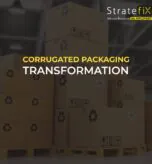For SME Owners, Operations Heads & CEOs: Gain Visibility, Plug Leaks & Protect Profit
When businesses talk about profit leaks, they often look at pricing, discounting, or operational inefficiencies. But one of the most under-recognized sources of financial drain hides in plain sight: inventory leaks.
From stockouts and miscounts to theft, obsolescence, and excess inventory, these silent leaks can quietly bleed your profits sometimes without you even knowing. And in today’s volatile business environment, where margins are already under pressure, ignoring these issues isn’t just risky. It’s expensive.
What Are Inventory Leaks?
Inventory leaks are any forms of unintended or uncontrolled inventory losses that reduce your bottom line. These can include:
- Shrinkage: Loss due to theft (internal or external), fraud, or error.
- Spoilage/Obsolescence: Products that expire or become unsellable due to age.
- Inaccurate Records: Mismatched stock counts between system and physical inventory.
- Overstocking or Dead Stock: Cash trapped in non-moving goods.
- Emergency Procurements: Costly last-minute purchases due to poor planning.
These issues are especially rampant in industries like retail, manufacturing, trading, and distribution but they affect nearly every business that manages physical stock. Left unaddressed, these issues not only inflate your inventory holding cost but also impact your company’s overall profitability.
The True Cost of Inventory Leaks (Backed by Data)
- According to the National Retail Federation’s 2023 report, inventory shrinkage accounted for 1.6% of total retail sales globally in FY 2022, resulting in over $112 billion in losses.
- A field experiment in grocery retail found that performing inventory audits increased sales by 11%, particularly by correcting negative stock discrepancies. (arXiv.org)
- Excess inventory ties up working capital and can add between 20–30% in annual carrying costs, including storage, insurance, and depreciation. (Toolsgroup)
These aren’t just finance issues. Inventory leaks directly affect sales, warehouse efficiency, customer satisfaction, and your ability to scale. Poor inventory control can lead to unnecessary markdowns, lost sales opportunities, and reactive supply chain decisions.
Common Operational Gaps Leading to Inventory Leaks
1. Lack of Real-Time Inventory Tracking
Without integrated systems like ERP or inventory visibility tools, businesses lack real-time insights into stock levels, movement, and location-specific trends leading to poor replenishment decisions.
2. Manual Inventory Management Practices
Paper-based or spreadsheet-driven tracking invites human error, duplication, and delayed reporting. This impacts inventory accuracy and accountability.
3. Undefined or Poorly Enforced SOPs
Absence of standard operating procedures in receiving, stocking, and dispatch leads to inconsistent practices, confusion, and ultimately, inventory mismanagement.
4. Disconnected Sales & Operations Planning (S&OP)
When procurement and sales teams don’t collaborate using shared forecasts and visibility tools, businesses either overstock or under-serve key channels, impacting inventory turnover.
5. Infrequent Stock Audits & Reconciliations
Inventory discrepancies go unnoticed for long periods, compounding losses and masking underlying system flaws. Regular cycle count practices are often missing.
6. Lack of Inventory Classification and Control
Treating all SKUs equally instead of prioritizing based on movement (e.g., ABC or FSN analysis) leads to wasted attention on irrelevant items and neglect of fast-movers.
7. Limited Visibility into Multi-Location Stock
Businesses with multiple warehouses or stores often lose sight of intra-location movements, creating imbalance and redundant purchases. This severely impacts inventory control for growing SMEs.
How Operations Consulting Helps Plug These Leaks
At Stratefix Consulting, we approach inventory not just as stock but as strategic capital that demands precision and process discipline.
Our inventory management consulting and operations improvement services enable businesses to:
Conduct Deep-Dive Diagnostics Using A.I.N.A™
We uncover inefficiencies, leakage points, and missed optimization opportunities through a structured, data-backed business diagnosis tailored for SMEs.
Design and Implement SOPs Across the Inventory Lifecycle
From inbound logistics and quality checks to order fulfillment and reverse logistics, we standardize processes for consistency and traceability critical for reducing inventory waste.
Introduce Inventory Classification Frameworks (ABC/FSN/SLOB)
We help categorize inventory by movement speed, value, and risk to optimize focus and improve replenishment logic.
Deploy Process Mapping and Role Accountability
We eliminate bottlenecks and role overlaps by assigning clear responsibilities across departments enhancing operational efficiency.
Strengthen Forecasting with Real Demand Planning
Using historical data, seasonality trends, and sales input, we create reliable demand forecasting models to guide procurement and stocking decisions.
Build a Culture of Stock Accuracy Through Training
Empowering teams with training on SOPs, handling protocols, and inventory systems reduces dependency on individuals and improves accountability.
Establish Review Mechanisms and Inventory KPIs
We enable weekly/monthly inventory review structures and dashboards to monitor key metrics like inventory turnover ratio, ageing stock, and order fulfillment rate.
With our proven approach to inventory process improvement, businesses gain control, reduce costs, and unlock working capital.
Real SME Cases from Stratefix
Apparel Brand Inventory Transformation An established fashion brand faced high dead stock and poor category-level data. Our team redesigned their warehouse logic, implemented a barcode system, and trained the team on FIFO handling. Improvements included:
- Reduction in non-moving stock
- Faster inventory reconciliation
- Improved warehouse pick efficiency
Textile Industry Waste Reduction A Surat-based printer was bleeding inventory in process wastage and rework. Stratefix implemented 5S methodology, visual controls, and process audits. As a result, the business reduced printing wastage and achieved consistent monthly cost savings.
These examples highlight how targeted operational changes grounded in inventory audit services and SME consulting can deliver real, measurable results. What matters most is not just identifying these leaks but acting on them with strategic precision.
Final Takeaway: What Gets Measured, Gets Managed
Inventory isn’t just a line item. It’s a strategic lever.
Whether you’re a manufacturing head, retail operator, or D2C brand owner inventory leaks are likely eating into your profit. But with the right inventory management consulting, process structure, and team training, they can be plugged.
The first step is awareness. The second is action.
Stratefix Consulting helps SMEs across India convert stock from silent loss to silent strength.
Book a Diagnostic Discovery Call to audit your inventory health and unlock profitability.






